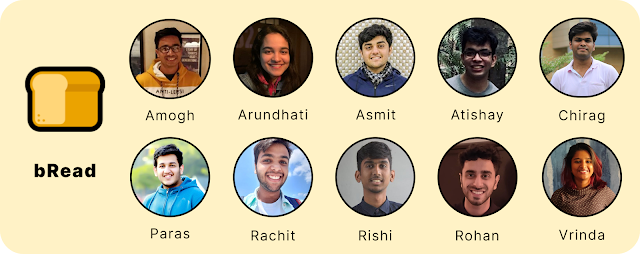🍞 bRead
🍞 What is the problem?
A Filter Bubble is a state of intellectual isolation that can result from personalized searches when a social media algorithm selectively guesses what information a user would like to see based on their interaction history and other data which platform knows about them.
It is difficult for a person to find opposing views on a topic on social media. One has to make a conscious effort to get diverse views on some topic, and break out from the filter bubble created by the social media algorithms. However, some choose to keep their filter bubble intact in order to prevent information overload which leads to misinformation, another problem prevalent in OSMs today.
🍞 What is bRead?
bRead is a new outlook on interacting with social media where people view multiple sides of a Debate, Question or News Topic and contribute to the conversation, hence delivering discourse in an organized, ethical and user-centric function.
🍞 How did we create bRead?
Initial User Study
60 participants in the age range of 15-25 years were initially invited to fill a survey to test various hypotheses regarding how their usage of a social media platform is impacted by diversity of the social media feed, targeted advertisements, organization of the feed, etc.
Results from the survey provided considerable evidence for the following hypothesis:
“Users prefer more organization and content diversity in their social media feeds than there is currently”.
We then conducted 2 sets of interviews with 10 participants: 6 Twitter users who have actively engaged on the platform for 4-5 years on average, and 4 Researchers whose work is based in the field of social media and filter bubbles.
The users were asked a wide range of questions to gauge how they engage with content and other users on the platform, and their views on the platform’s design and the issue of Filter bubbles. Results from the User interviews are summarized as follows:
The homepage provides an intelligently curated list of topics a.k.a. loafs with each loaf containing discourse around politics, entertainment, sports, global affairs or any relevant topic appealing to the masses.







Comments
Post a Comment